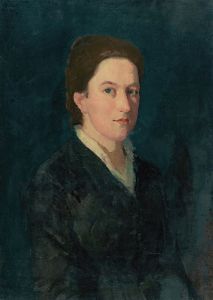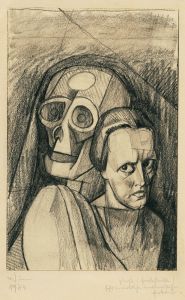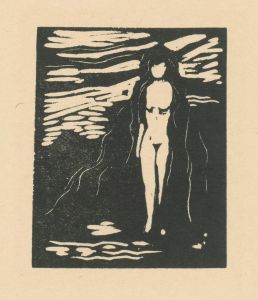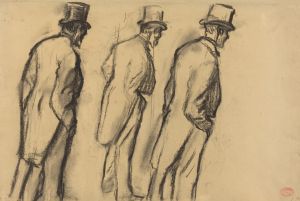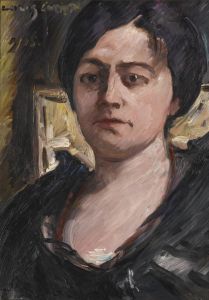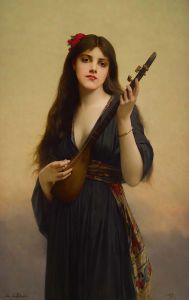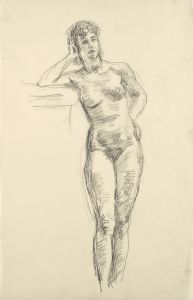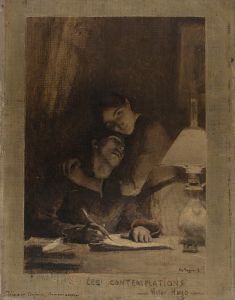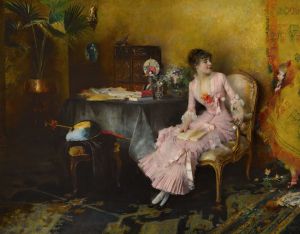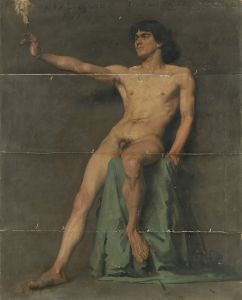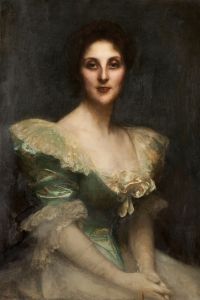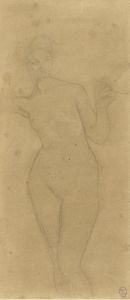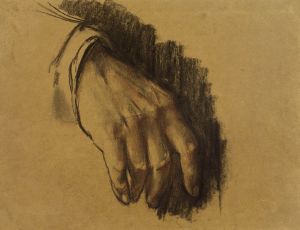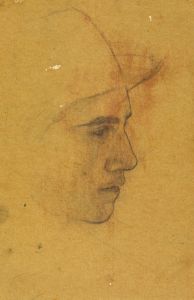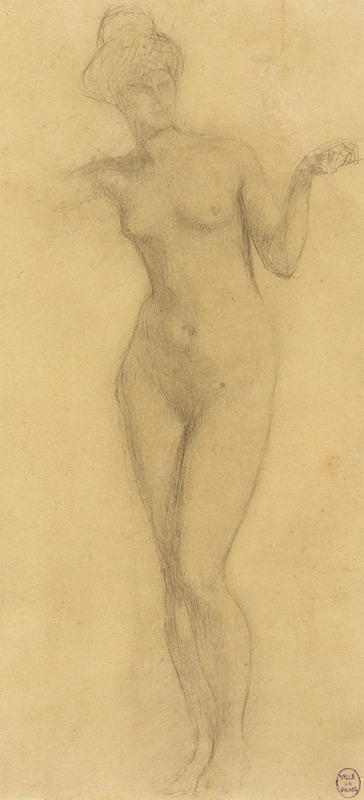
Femme nue
A hand-painted replica of Pascal-Adolphe-Jean Dagnan-Bouveret’s masterpiece Femme nue, meticulously crafted by professional artists to capture the true essence of the original. Each piece is created with museum-quality canvas and rare mineral pigments, carefully painted by experienced artists with delicate brushstrokes and rich, layered colors to perfectly recreate the texture of the original artwork. Unlike machine-printed reproductions, this hand-painted version brings the painting to life, infused with the artist’s emotions and skill in every stroke. Whether for personal collection or home decoration, it instantly elevates the artistic atmosphere of any space.
Pascal-Adolphe-Jean Dagnan-Bouveret was a prominent French painter known for his realistic and detailed style, often associated with the Naturalist movement. Born on January 7, 1852, in Paris, Dagnan-Bouveret was a student of the École des Beaux-Arts and studied under the tutelage of Jean-Léon Gérôme, a well-known academic painter. Throughout his career, Dagnan-Bouveret became renowned for his ability to capture the human form with precision and sensitivity, a skill that is evident in many of his works, including "Femme nue."
"Femme nue" is a painting that exemplifies Dagnan-Bouveret's mastery of the human figure and his commitment to realism. The title, which translates to "Nude Woman" in English, suggests the subject matter of the painting—a depiction of the female form. While specific details about the painting's creation, such as the date it was painted or its current location, are not widely documented, it is consistent with Dagnan-Bouveret's oeuvre, which often focused on the human body and portraiture.
Dagnan-Bouveret's approach to painting was heavily influenced by his academic training and the Naturalist movement, which sought to depict subjects with a high degree of accuracy and attention to detail. This movement was a reaction against the more romanticized and idealized portrayals of subjects that were common in earlier art periods. Instead, Naturalists like Dagnan-Bouveret aimed to present their subjects truthfully, often highlighting the beauty and complexity of everyday life and the human condition.
In "Femme nue," Dagnan-Bouveret likely employed his characteristic technique of using a muted color palette and soft lighting to enhance the realism of the scene. His attention to anatomical accuracy and the subtle play of light and shadow would have contributed to the lifelike quality of the painting, inviting viewers to appreciate the natural beauty of the human form.
Throughout his career, Dagnan-Bouveret received numerous accolades for his work. He was a regular exhibitor at the Paris Salon, where he gained critical acclaim and several awards. His dedication to realism and his skillful execution of the human figure earned him a respected place among his contemporaries and influenced future generations of artists.
While "Femme nue" may not be as widely recognized as some of Dagnan-Bouveret's other works, such as "The Pardon in Brittany" or "Breton Women at a Pardon," it remains an important example of his artistic style and his contribution to the Naturalist movement. Dagnan-Bouveret's legacy as a painter is marked by his ability to capture the essence of his subjects with both technical precision and emotional depth, qualities that are likely reflected in "Femme nue."
In summary, "Femme nue" by Pascal-Adolphe-Jean Dagnan-Bouveret is a testament to the artist's skill in rendering the human form with realism and sensitivity. Although specific details about the painting are scarce, it is representative of Dagnan-Bouveret's broader body of work and his commitment to the principles of the Naturalist movement.





